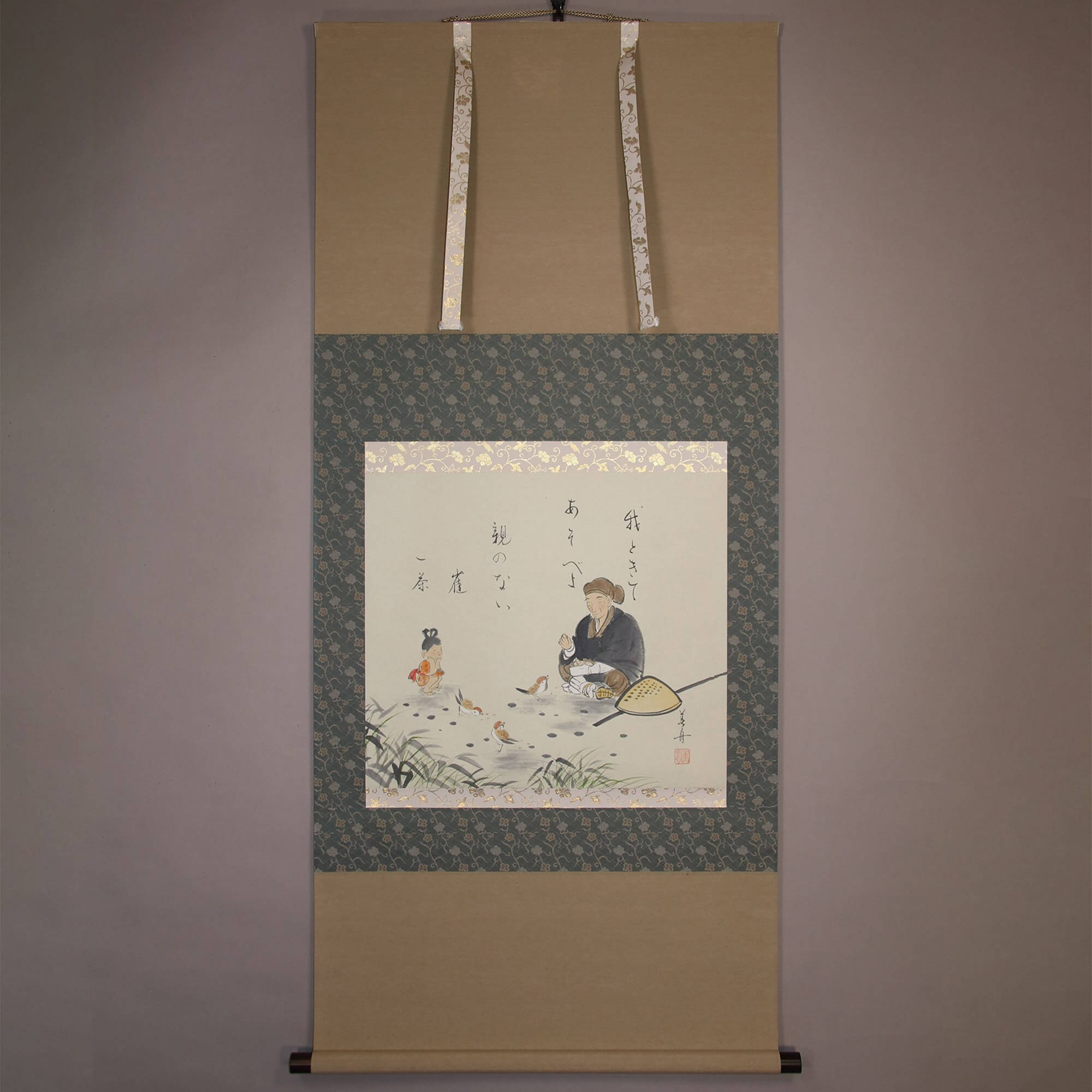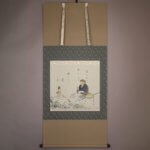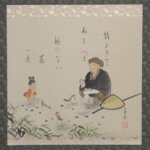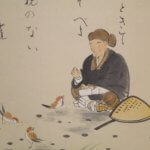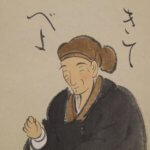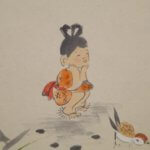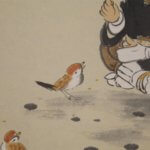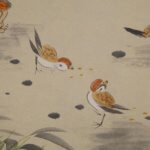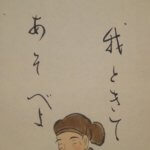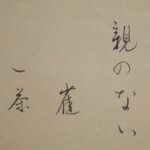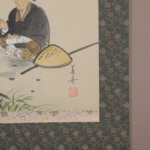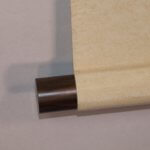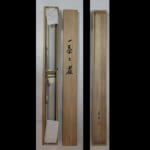Kakejiku Hanging Scroll: Kobayashi Issa and Sparrows / Yuki Bishū - Kobayashi Issa to Suzume
- Product ID
- B0162
- Name
- Yuki Bishū
- Profile
A Japanese-style painter. In 1955, born in Gifu Pref. Active in solo exhibitions, which have been held at galleries and department stores.
- Size
- 690mm x 1400mm
- Roller End Material
Redsandalwood- Material of the Work
- Japanese Paper
- Stock Condition
- Sold out
- Description
Kobayashi Issa (1763-1827) was a Japanese haiku poet of the late Edo period. He was born in Nagano Prefecture. At the age of 15, he went to Edo (current Tokyo) to eke out a living, and later, came across haiku poetry. He eventually became one of the most famous haiku poets of the Edo period, along with Matsuo Bashō and Yosa Buson. Many of his haiku poems are about innocent children and small animals such as sparrows and frogs.
In this work, one of Kobayashi Issa’s most famous haiku poem and the scene of the haiku are depicted by a Japanese painter, Yuki Bishū, who specialized in haiga (simple painting praising haiku poetry). The meaning of this poem is as follows:
Oh, lonely little sparrows playing being separated from their parents, I am just like you, having lost my mother. Come here and play with me.
Kobayashi Issa had a tough childhood having lost his mother and failing to get along with his stepmother. His early life was so challenging that, Issa treated these parentless sparrows with affection seeing his old self in them. The painting depicts Issa feeding the sparrows and a child watching the scene with a smile, which is very pleasant. It is a heartwarming haiga.

